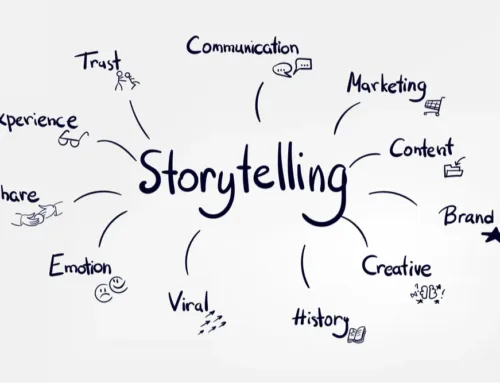SEO Myths That Refuse to Die (and What Actually Works in 2025)
SEO has more urban legends than a late-night ghost tour.
SEO Myths That Refuse to Die (and What Actually Works in 2025)
SEO has more urban legends than a late-night ghost tour.
Every year, someone declares “SEO is dead,” and yet, here we are in 2025 – still optimising, still ranking, still making money from organic search. The truth is, SEO isn’t dead. But plenty of SEO myths refuse to die, like zombies shuffling around the industry, wasting people’s time and draining budgets.
This post? We’re grabbing a shovel, burying those myths once and for all, and then showing you what actually works in 2025. Strap in.
Myth 1: “Just Stuff Keywords Everywhere and You’ll Rank”
Ah yes, the golden age of 2005. Sprinkle “cheap flights Essex” on a page 37 times, and Google crowned you king. That was 20 years ago. Now, keyword stuffing is like showing up to a black-tie event in Crocs.
Reality in 2025: It’s About Intent, Not Density
Google’s AI-driven algorithms (hello, MUM and BERT descendants) understand context. They don’t need you to repeat “best plumber in Southend” like a parrot. Instead:
Cover the topic deeply (answer related queries).
Use natural phrasing (write like a human).
Optimise around search intent (informational, transactional, navigational).
✅ What works: One primary keyword per page, surrounded by semantically related terms. Focus on answering the damn question.
Myth 2: “Meta Keywords Matter”
Still seeing agencies charge for “optimising your meta keywords”? Run. That tag was declared irrelevant by Google in 2009.
Reality in 2025: Meta Titles & Descriptions Still Matter
Meta titles influence rankings; meta descriptions influence click-through. Meta keywords influence nothing – except how gullible your SEO provider thinks you are.
✅ What works: Write clickable, human-first titles/descriptions. Example:
Old-school: “SEO Agency Essex | SEO Essex | Essex SEO Services”
2025 version: “Essex SEO That Actually Works: Data-Driven Strategies for Local Growth”
Myth 3: “More Backlinks = Higher Rankings”
Quantity over quality used to be the mantra. Buy 5,000 backlinks from dodgy forums in a week and boom, you’d rank. Until Penguin (2012) and every algorithm since nuked spammy link farms.
Reality in 2025: It’s About Authority and Relevance
Backlinks still matter, but Google’s quality filters are savage now. One link from BBC Essex crushes 500 from “randomblog.ru.”
✅ What works:
Earn links via digital PR (newsworthy content, data studies).
Focus on topical relevance (gardening site links for your lawn care brand > generic “article directories”).
Diversify anchors – no more “exact match keyword vomit.”
Myth 4: “Longer Content Always Wins”
You’ve heard it: “You need 2,000 words to rank.” But length alone doesn’t impress Google — or readers. If someone Googles “how many ounces in a pint,” they don’t want a Shakespearean sonnet.
Reality in 2025: Content Depth Beats Content Length
Long is fine, but only if it’s useful. Google’s Helpful Content Update put user-first answers above waffle.
✅ What works:
Answer the query directly.
Provide context and depth where relevant.
Use rich media (images, videos, tables) to enhance experience.
Short, sharp answers can and do outrank bloated fluff.
Myth 5: “Domain Age Guarantees Rankings”
Some people still believe older domains automatically rank better. Spoiler: Google said domain age has little to no weight.
Reality in 2025: Authority & Freshness Matter More
Old sites with stale, unoptimised content sink fast. New sites with quality content and smart link-building rise quickly.
✅ What works: Update old pages regularly, publish new insights, and show Google your site is alive and relevant.
Myth 6: “SEO Is Just About Google”
Sure, Google dominates, but search is no longer a one-platform game. People are searching on TikTok, YouTube, Instagram, Amazon, and even AI assistants like ChatGPT.
Reality in 2025: Search Is Everywhere
SEO is about discoverability wherever your audience hangs out. Optimise for Google, but don’t ignore:
YouTube SEO for video.
TikTok SEO for short-form discovery.
Amazon SEO for e-commerce.
Local SEO for Maps and voice assistants.
✅ What works: Expand SEO strategies across multi-channel ecosystems.
Myth 7: “AI Content Is All You Need”
Yes, AI tools can churn out blogs at warp speed. No, that doesn’t mean you should dump them on your site raw. AI is good, but unedited AI is repetitive, shallow, and easy for algorithms (and readers) to sniff out.
Reality in 2025: AI + Human = Gold
Google doesn’t penalise AI content, but it does penalise crap content. AI drafts + human editing for accuracy, personality, and depth = winning combo.
✅ What works: Use AI for scale, but always inject expertise, brand voice, and fact-checking.
Myth 8: “Social Media Doesn’t Impact SEO”
The myth: links from social platforms don’t directly influence rankings, so social is irrelevant for SEO.
Reality in 2025: Social Signals Indirectly Boost SEO
Viral posts → more visibility → more backlinks → stronger brand signals → higher rankings. Social is the accelerant for link-building and brand searches, which Google loves.
✅ What works: Align your SEO content with social campaigns. Promote, amplify, and let your content earn natural links.
Myth 9: “Local SEO Is Just Citations”
Yes, local citations (directory listings) matter. But if you think dumping your business into Yell.com clones will win, you’re stuck in 2013.
Reality in 2025: Reviews, Content & Engagement Rule Local
Google Business Profiles, reviews, photos, local content, and community engagement matter more than endless directories.
✅ What works:
Encourage real customers to leave reviews (with photos if possible).
Post updates to Google Business Profile regularly.
Create localised landing pages and blogs (“Best Essex Drainage Solutions in 2025”).
Myth 10: “SEO Is One and Done”
Some businesses still think SEO is a project: optimise the site, tick the box, walk away. That’s like saying brushing your teeth once keeps cavities away forever.
Reality in 2025: SEO Is Ongoing
Algorithms change. Competitors publish. Content ages. Links break. If you’re not consistently updating, you’re slipping backwards.
✅ What works: Monthly audits, quarterly strategy refreshes, ongoing content creation, and link-building.
The Real SEO Playbook in 2025
Strip away the myths, and here’s what actually works:
Content That’s Actually Helpful: Depth, context, multimedia, and user-first.
Topical Authority: Clusters of content around key subjects, not scattergun blogs.
Smart Technical SEO: Fast loading, mobile-first, Core Web Vitals nailed.
Authoritativeness: Quality backlinks from relevant, trusted sites.
User Signals: Engagement, click-through, dwell time, and reduced bounce.
Multi-Platform SEO: Beyond Google – optimise for YouTube, TikTok, Maps.
AI + Human Collaboration: Scale + authenticity.
Continuous Optimisation: SEO never sleeps, and neither should your strategy.
SEO isn’t dead. But plenty of zombie myths still are. If you’re still keyword stuffing, chasing meta keywords, or treating SEO like a one-off task, you’re wasting time.
The brands winning in 2025? They’re ditching the BS, doubling down on user-first content, technical excellence, and multi-platform optimisation. Do that, and you’ll leave the myth-believers behind buried in page two of Google where they belong.




